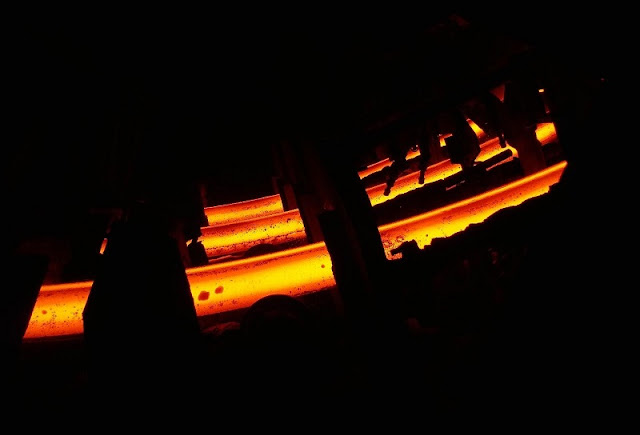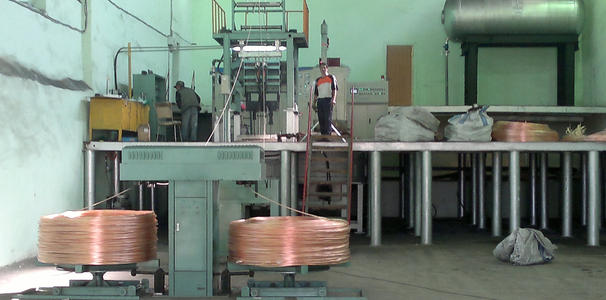Continuous Casting Molten Steel Preparation
Continuous Casting Molten Steel Preparation
Refers to controlling the temperature, composition, purity, and pourability of molten steel ready for continuous casting, so as to provide for continuous casting in a balanced manner. The selection of out-of-furnace refining and treatment of molten steel that matches the continuous casting steel grade is an important means to meet the above requirements.
Continuous Casting Molten Steel Temperature
Pouring temperature is one of the basic process parameters of continuous casting.
This pouring temperature refers to the molten steel temperature of the tundish.
The low pouring temperature will make the molten steel sticky, and the non-metallic inclusions will not easily float up; the solidified shell on the surface of the molten steel of the mold will lead to surface defects of the casting billet; in severe cases, the nozzle will freeze and the pouring will be interrupted.
If the pouring temperature is too high, the refractory will be seriously eroded, and the non-metallic inclusions in the steel will increase; the oxygen and nitrogen absorbed by the molten steel from the air will increase; the solidified shell of the mold is thin, and it is easy to leak; the columnar crystal of the slab is developed, and the center is segregated. aggravated.
The basic requirements for continuous casting molten steel temperature are:
(1) High temperature.
Due to the increased heat loss of the tundish, the molten steel temperature is 20-50°C higher than that of die casting, so the pouring can be successful.
(2) Uniform.
In fact, the temperature of the molten steel in the ladle (ladle) is lower in the upper and lower parts and higher in the middle area, which will also cause the temperature of the molten steel in the tundish to be lower at both ends and higher in the middle, which is not conducive to the control of the pouring process. Therefore, the temperature of the molten steel in the ladle is required. evenly.
(3) Stable.
The molten steel temperature of each furnace supplied during continuous pouring should not fluctuate too much and should be kept within the range of 10 to 20 °C.
The molten steel pouring temperature includes two parts:
One is the solidification temperature of molten steel (liquidus temperature), which varies with steel grades;
The second is the superheat degree of molten steel, that is, the value exceeding the solidification temperature.
Tc represents the pouring temperature, TL represents the liquidus temperature, △T represents the superheat of molten steel, then
Tc=TL+△T There are many formulas for calculating TL. The commonly used formula is:
TL=1537℃1(88%C+8%Si+5%Mn+30%P+25%S+5%Cu+4%Ni+2%Mo+2%V+1.5%Cr)
The determination of superheat ΔT is related to product quality.
For medium and heavy plates, in order to reduce the center segregation in the slab, it is better to have a lower concave (10-15 °C); for thin plates for deep drawing, in order to promote the floating of non-metallic inclusions in the molten steel, it is better to have a higher △T ( 30°C).
The practice has proved that the target temperature of molten steel in the tundish is a key process parameter to ensure the output of the continuous caster and the quality of the slab, and it must be well controlled.
The Composition of Molten Steel
The control of the composition of molten steel should first meet the requirements of steel specifications, ensure that the alloying elements added to the molten steel can be evenly distributed, and control the composition within a narrow range to ensure the stability of product performance.
The elements contained in molten steel can be roughly divided into:
(1) Alloying elements. It is intentionally added to the steel to make it reach the specified composition range to ensure the mechanical properties and service performance of the steel.
(2) Impurity elements. It refers to the elements (such as s, P, etc.) that are not expected to exist in the steel and are not intentionally added, which have a harmful effect on the performance of the steel.
(3) Residual elements. It refers to the elements brought into steel by raw materials (such as scrap steel) or refractory materials, such as As, Pb, Sn, Cu, etc. They have an adverse effect on the hot brittleness and corrosion resistance of steel.
(4) Trace elements. In order to change a certain property of the product, it is intentionally added to the steel, such as B, Nb, V, Ti, etc., and its content is less than 0.1%.
Some of these elements in steel are intentionally added, and some are left behind if they are not removed, and they have an important impact on product quality.
Purity of molten steel Purity refers to the content level of S, P, 0, H, N, and other elements in steel. In principle, the number of impurities (such as S, P), gases (H, N), and non-metallic inclusions (O) in steel should be minimized to improve the quality of continuous casting slabs and ensure product performance.
The Pourability of Molten Steel
The diameter of the nozzle of the tundish tank is small and the pouring time is long. It is necessary to ensure that the molten steel has good fluidity and does not block or freeze the nozzle. The temperature of the steel is low, which may freeze the nozzle; Al in the aluminum deoxidized molten steel. O. The inclusion of a solid-state will cause the nozzle of the tundish to be blocked and the pouring will be interrupted.
Hani is the one-stop supplier able to design, manufacture, install and commission your melt shop and hot rolling mill plant from A to Z.
Get Casting Machine Prices, Free send inquiries to stella@hanrm.com or inquiry99@hanmetallurgy.com if any needs.
Whatsapp/Wechat:+8615877652925
Website: https://www.hanmetallurgy.com/



评论
发表评论